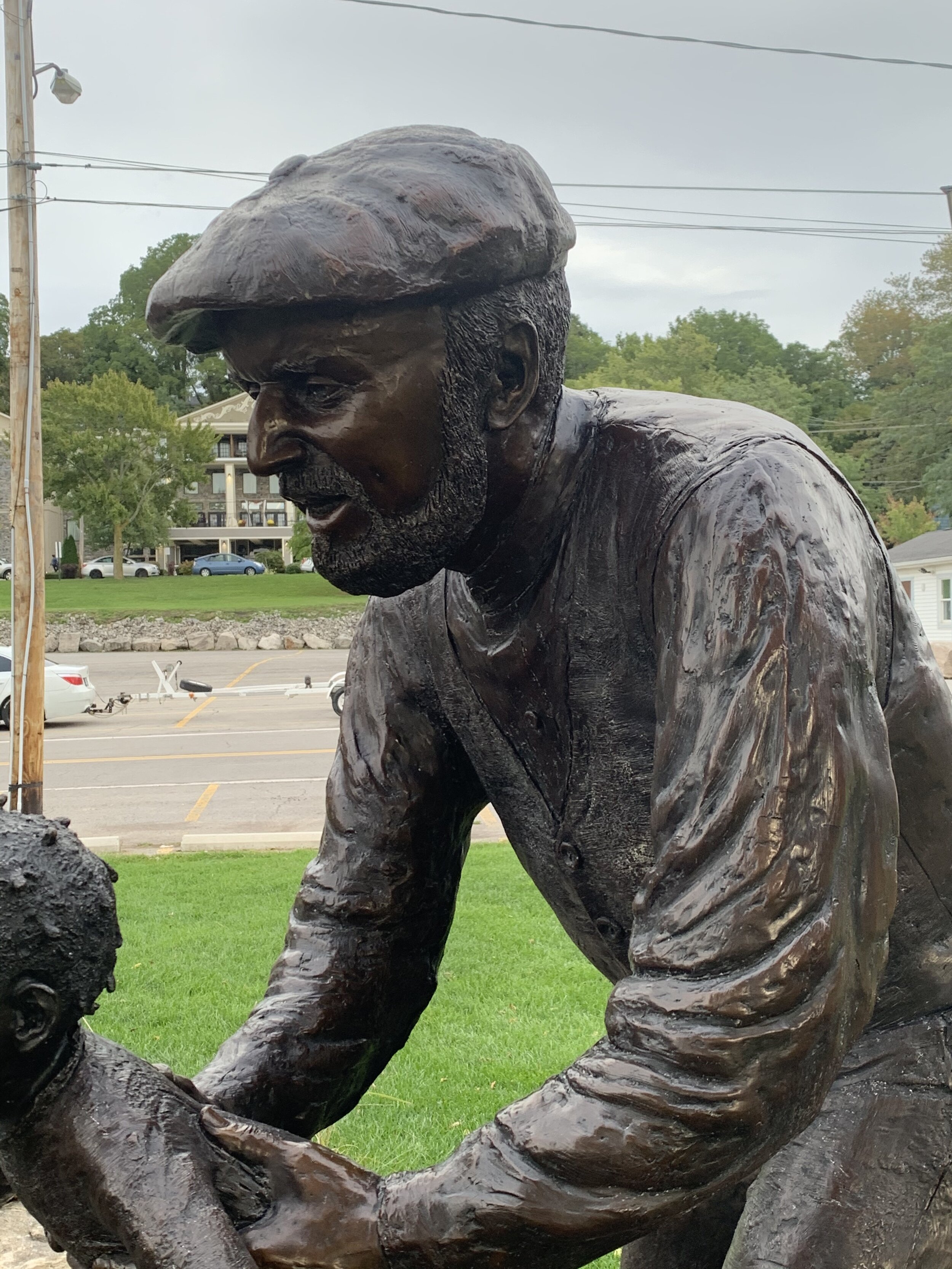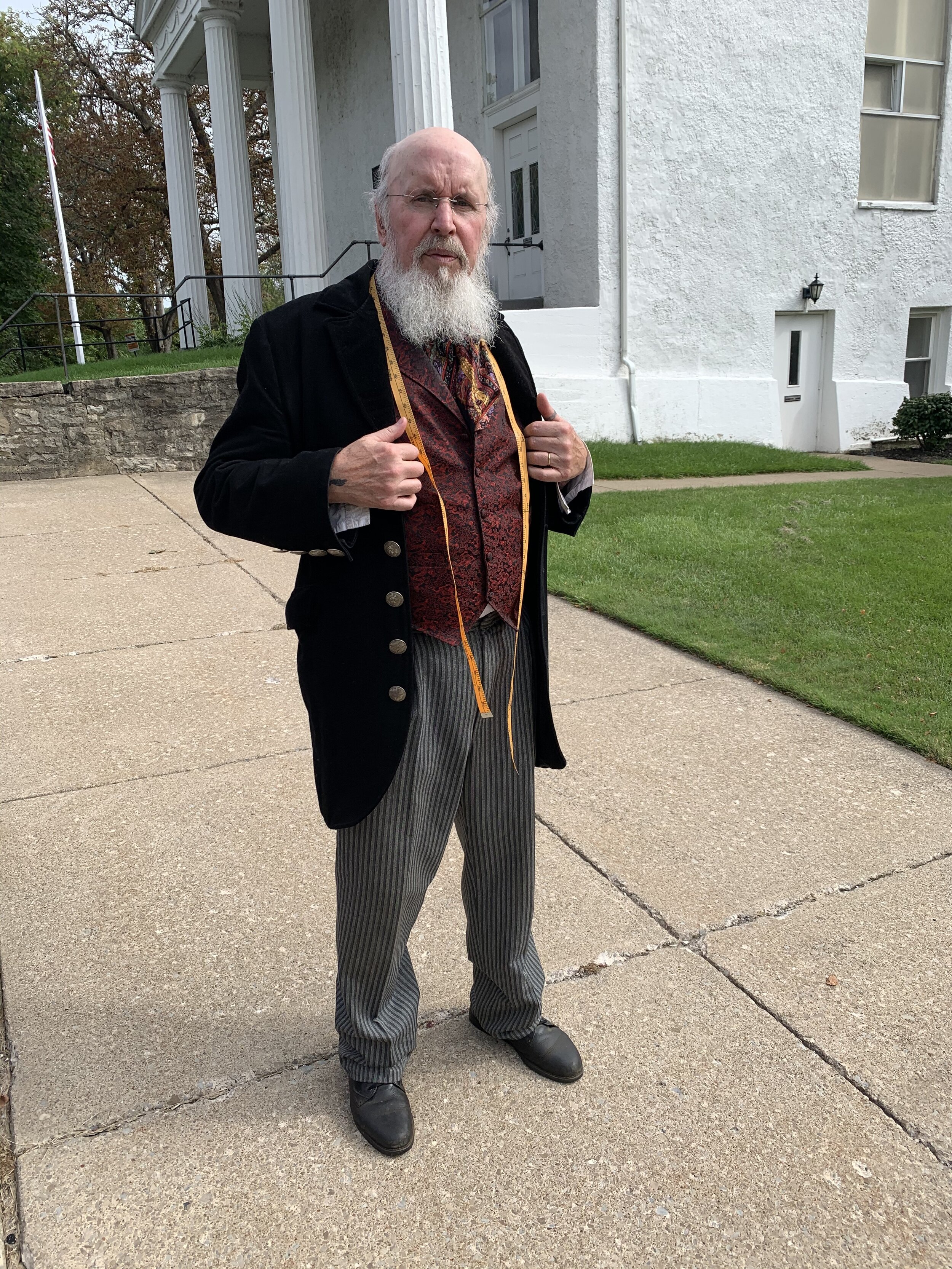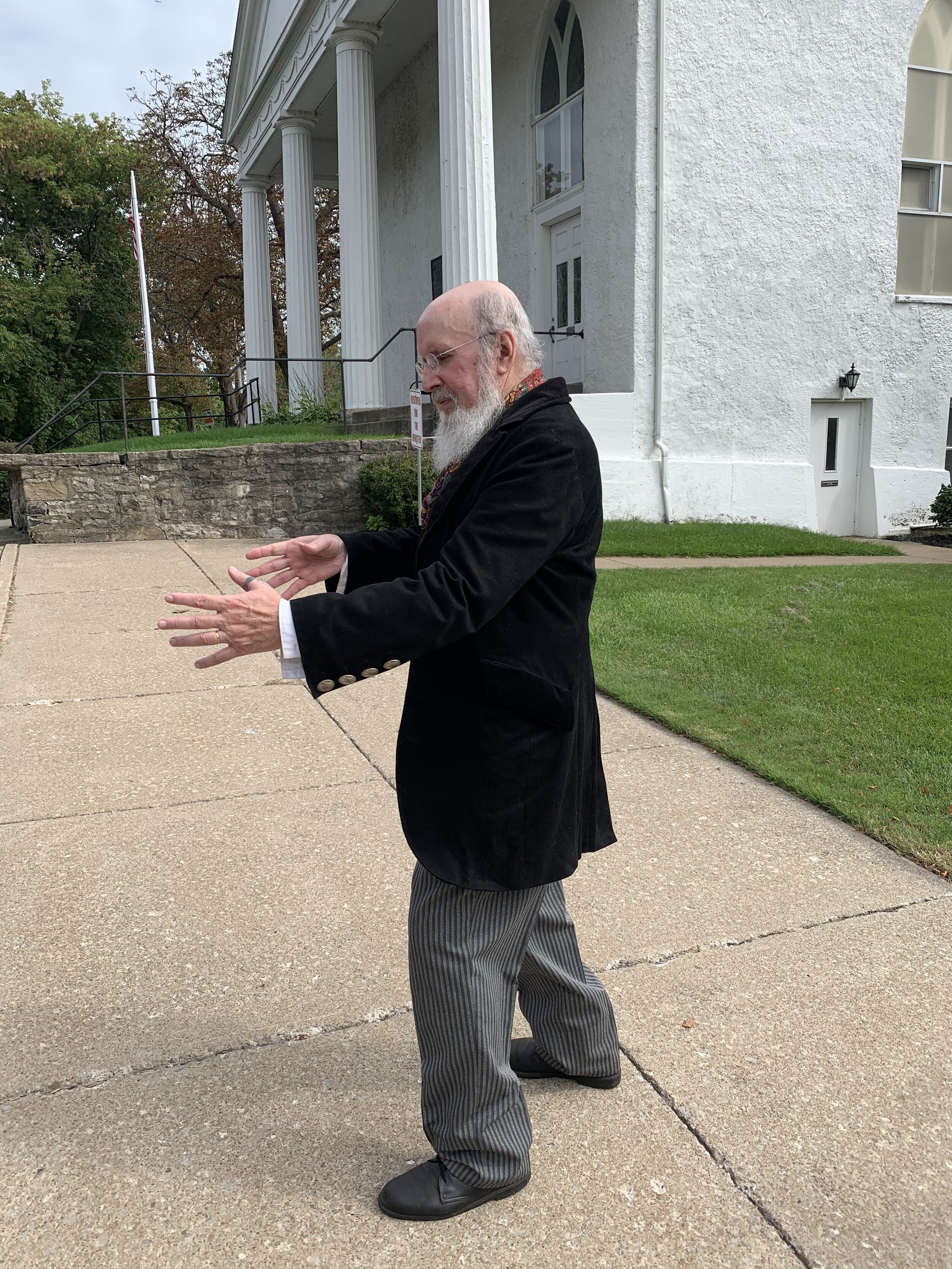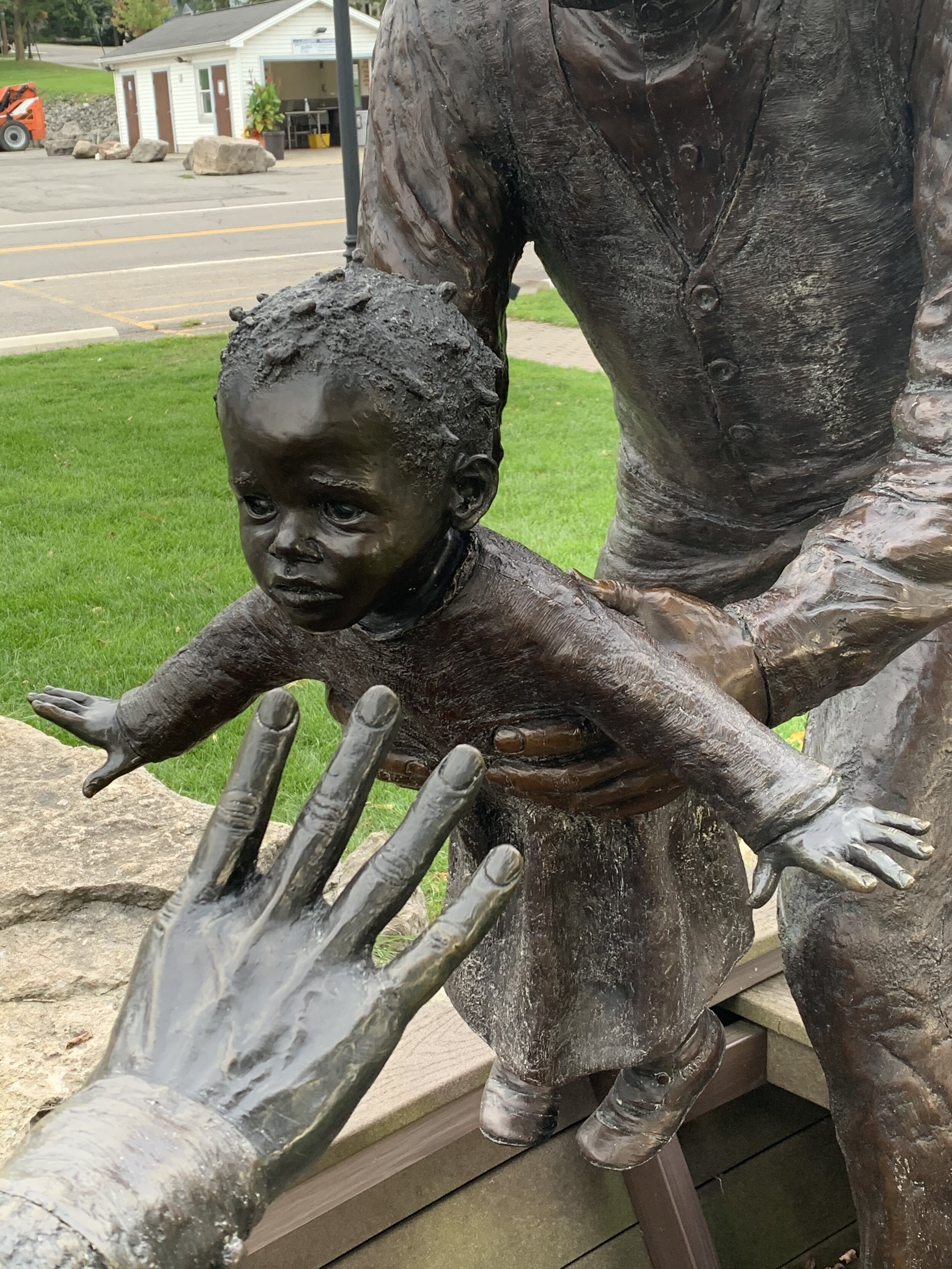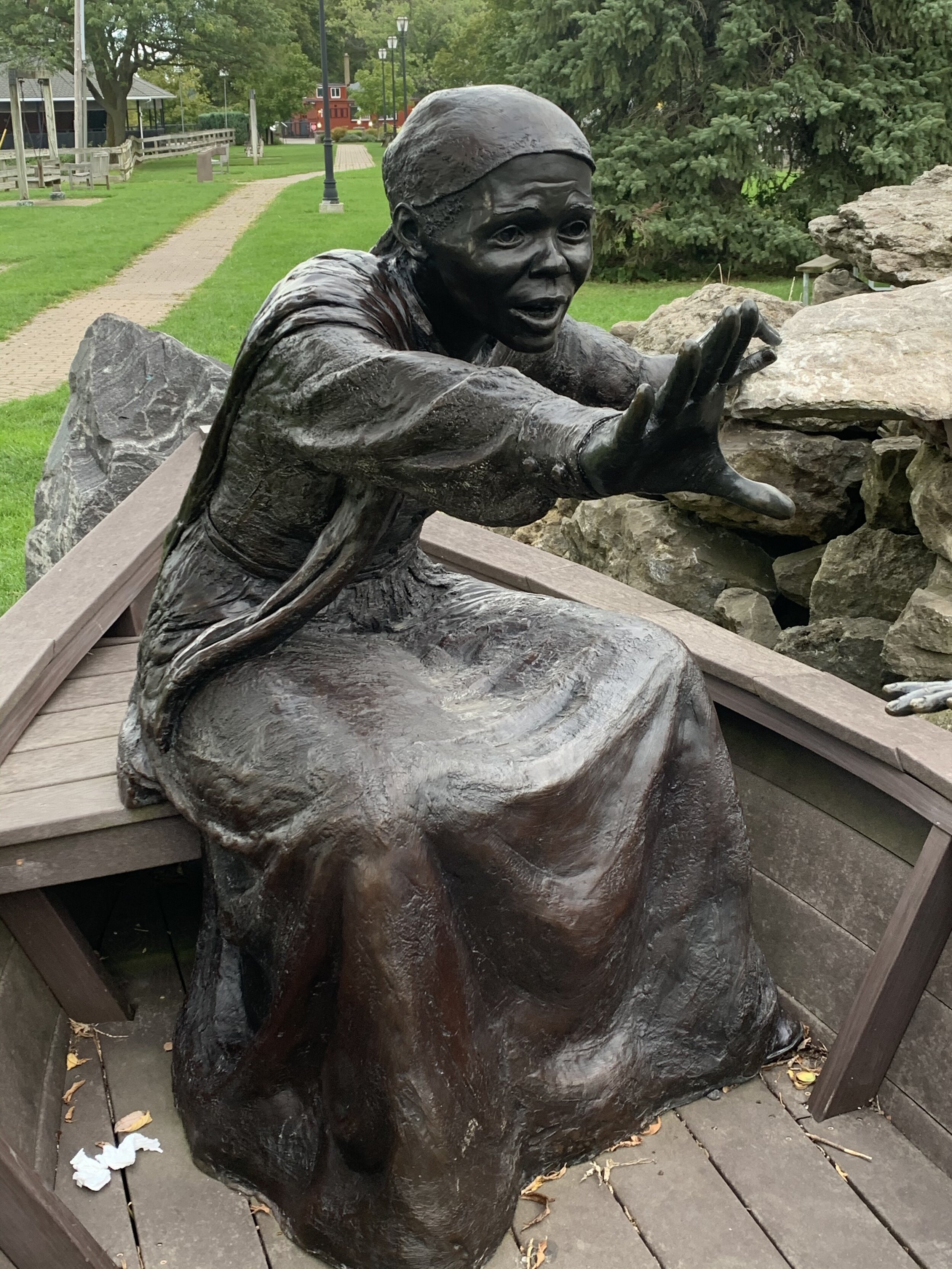After five months, I am back at my blog post (let’s just say day-to-day life interceded and the COVID-19 epidemic has me in one place with plenty of time). I’m going to wrap up the New York State Network to Freedom posts with a look at the Freedom Crossing Monument in Lewiston; the Frederick Douglass Monument and all things Douglass in Rochester; and the Harriet Tubman Statue at the Equal Rights Cultural Heritage Center in Auburn.
Lewiston Landing, New York. Looking west across the Lower Niagara River to Canada. Photograph by Renée Ater, September 2019.
Seven miles north of Niagara Falls, Lewiston, New York, played an important role in the Underground Railroad. Located along a narrow section of the Lower Niagara River, boats made their way west across the river, transporting freedom seekers to Canada.
Susan Geissler, Freedom Crossing Monument, 2009, Lewiston, New York. Photograph by Renée Ater, September 2019.
Created by local artist Susan Geissler, The Freedom Crossing Monument is located along the river at Lewiston Landing. The monument is an interesting conflation of fiction and history. It honors Margaret Goff Clark’s children’s novel Freedom Crossing (1969), and it memorializes the real Underground Railroad that ran across western New York, highlighting the efforts of station master Josiah Tryon (1798-1886).
Click on the image below to activate the slide show.
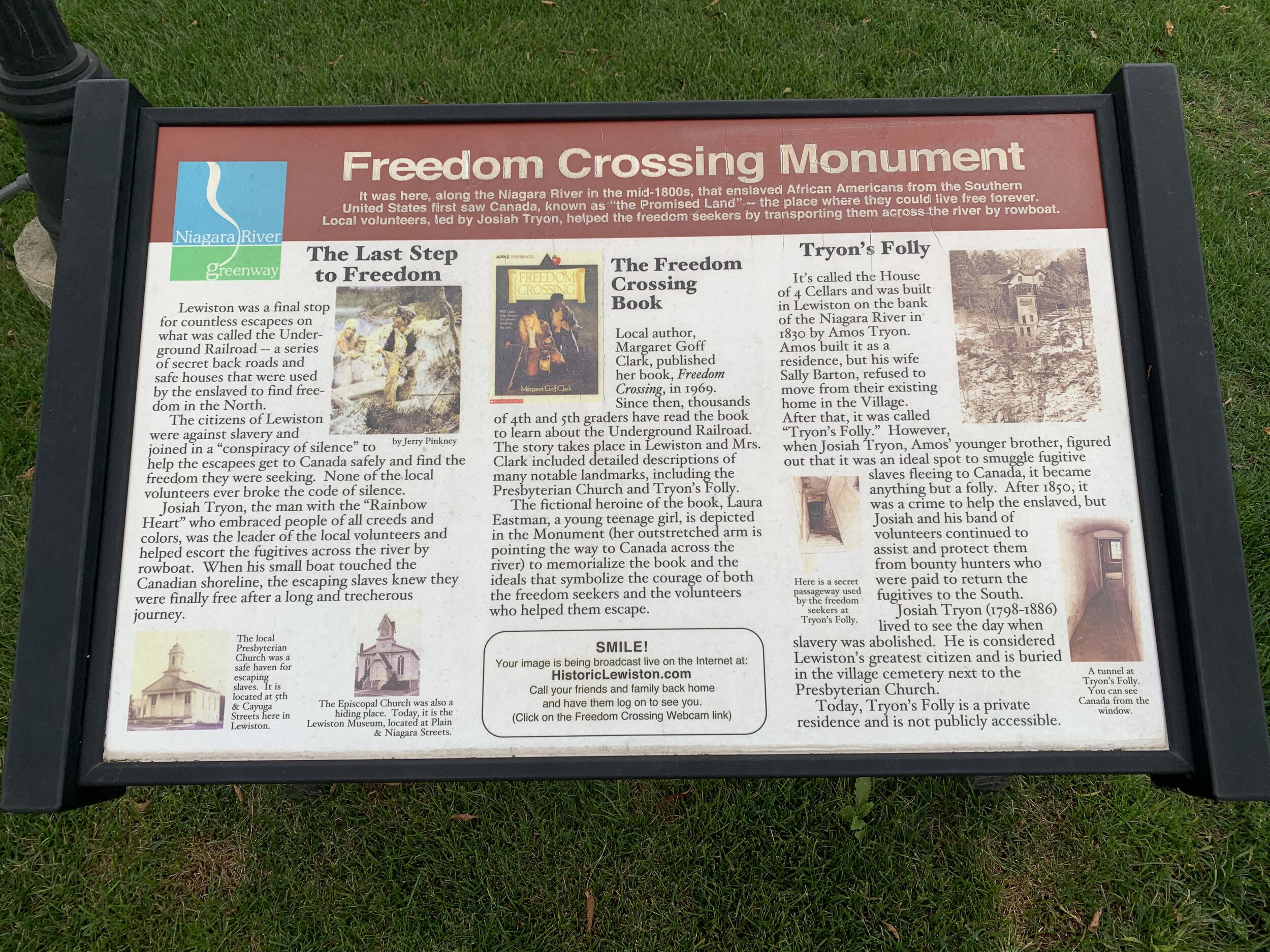
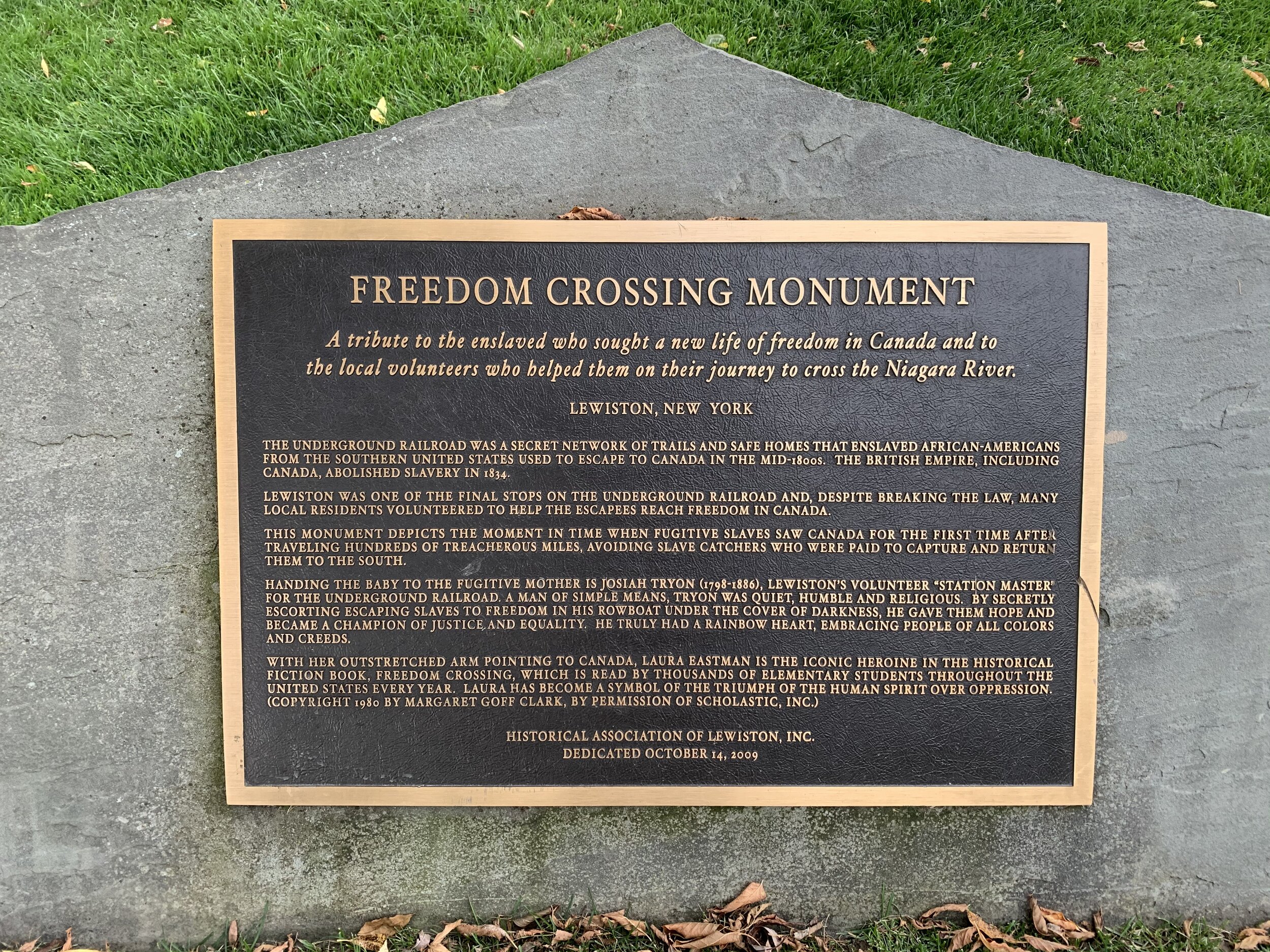
The heroine of Goff’s novel is Laura Eastman, a fifteen-year-old living in the 1850s, who finds herself deeply conflicted about slavery. After living with her aunt and uncle (pro-slavery advocates) in Virginia for four years, she returns to her family’s farm outside Lewiston. She soon discovers that her brother and father are involved in the Underground Railroad, sheltering fugitives from slavery in their home. Transformed by the plight of Martin Paige, a thirteen-year-old freedom seeker from North Carolina who arrives at her family’s Underground Railroad station, Laura commits to helping him across the Niagara River to Canada, forever transforming her understanding of slavery, humanity, and family.
Susan Geissler, Statue of Laura Eastman with an anonymous male (One More River to Cross) from Freedom Crossing Monument, 2009, Lewiston, New York. Photograph by Renée Ater, September 2019.
Laura is shown at the apex of the monument, standing atop a small hill of granite. Dressed in her brother’s clothing (per the novel) with a long braid down her back, the teenager wears an urgent expression on her face as she assists an older African American, whom the artist identifies as “One More River to Cross.” With extended arm, Laura points with her right index finger across the Niagara River to Canada. Her left hand hovers over the freedom seeker’s back, encouraging him forward. Holding a cane in his hand, the African American male is ready to move forward. The dynamic gestures and expressions of the two cast figures convey the urgency of their mission.
Susan Geissler, Statue of Josiah Tryon, anonymous mother (Five Hundred Feet to Freedom) and child from Freedom Crossing Monument, 2009, Lewiston, New York. Photograph by Renée Ater, September 2019.
The artist organized the second grouping of the Freedom Crossing Monument around a row boat. This part of the monument recognizes the dedication of the historic Underground Railroad station master Josiah Tryon. The bronze figure of Tryon stands with with one foot on the symbolic rocky shore of the Niagara River, and the other foot on the bottom the row boat. In his extended hands, he holds a young African American child. Seated in the boat, a desperate mother (“Five Hundred Feet to Freedom”) leans forward and reaches for her child, a modeled expression of alarm and anguish.
Click on the image below to activate the slide show and to see Josiah Tryon reenactor Timothy Henderson.
As no historic photographs exists of Tyron, his portrait is based on the visage of local Tryon reenactor Timothy Henderson. While I was visiting the First Presbyterian Church in Lewiston, I ran into Henderson who was conducting a television interview at the historic cemetery behind the church. The uncanny serendipity of meeting Henderson had me wondering about the use of models for the monument. The two adult African Americans remain anonymous, mythic in their representation of the ideals of freedom and the Underground Railroad: “One More River to Cross” and “Five Hundred Feet to Freedom.” The young child’s representation suggests stereotype.
Susan Geissler, Statue of child from Freedom Crossing Monument, 2009, Lewiston, New York. Photograph by Renée Ater, September 2019.
I have been stuck on the image of the young child in this monument and the modeling of her hair. I see a caricature of the pickaninny (also picaninny, piccaninny or pickinninie), a derogatory image of the black child as wild and untameable. First realized in the character of Topsy from Harriet Beecher Stowe’s Uncle Tom’s Cabin (1852), the image continues to have surprising currency. The baby’s distressed expression suggests real emotion but nonetheless I am pulled up short by the caricature residing in the bronze. Someone recently suggested to me that the hairstyle is a real one, derived from African hairstyles, and the representation is more ambiguous. I’m not sure I agree—I’m wrestling with the idea that the black figures in this monument appear to be types rather than portraits.
Pickaninny souvenir card. Copyright by E.C. Kropp Company, Milwaukee, Wisconsin.
Uncle Tom’s Cabin Co. “Topsy.” Library of Congress, https://lccn.loc.gov/2014637437
The image of the mother in the boat bears striking resemblance to Harriet Tubman (1822-1913). Geissler included a figure of Tubman in the original monument design. Then a controversy arose between leaders in Lewiston and Niagara Falls over who had the right to “claim” Tubman in monumental form. As Tubman never came through Lewiston, she was omitted from the final monument design. However, hidden within the folds of the woman’s dress are the words ““Mourn the Rainbow Heart,” a reference to Tryon, and an anagram that reads “We honor Harriet Tubman.”
Susan Geissler, Statue anonymous mother (Five Hundred Feet to Freedom) from Freedom Crossing Monument, 2009, Lewiston, New York. Photograph by Renée Ater, September 2019.
According to the Buffalo News (May 21, 2016), the other four figures also include secret codes.
“On the father slave’s left pant leg are the words, “Though some may fail, those who try on and on will succeed. Sometimes folly leads to freedom and the rabbit escapes from the trap.” This is a quote from the Freedom Crossing novel and a play on the words “try on and on,” which refers to Tryon. The novel’s ISBN number is found on the inside of the coat of the statue depicting the young Eastman. On the baby’s shoe is found Exodus 5.1, which refers to the biblical verse, “Let my people go.” And, the GPS coordinates for Tryon’s grave in the Lewiston Cemetery are etched on the pant leg of this humble local hero.”
Susan Geissler, Freedom Crossing Monument, 2009, Lewiston, New York. Photograph by Renée Ater, September 2019.
The Freedom Crossing Monument is a source of great pride for the town of Lewiston, as a recent 10th Anniversary celebration reveals. This civic pride and claiming of its historic role in the Underground Railroad is important. At the same time, I understand the monument to have similar problems to nineteenth-century monuments that rely on tropes of blackness with an unintentional slide to caricature.
For those of you interested in the production of this monument, watch this video of the casting of the Freedom Crossing Monument.




